Homestead How To: Create A Swale & Berm For Water Management | Part 1
homesteading·@mountainjewel·
0.000 HBDHomestead How To: Create A Swale & Berm For Water Management | Part 1
<center>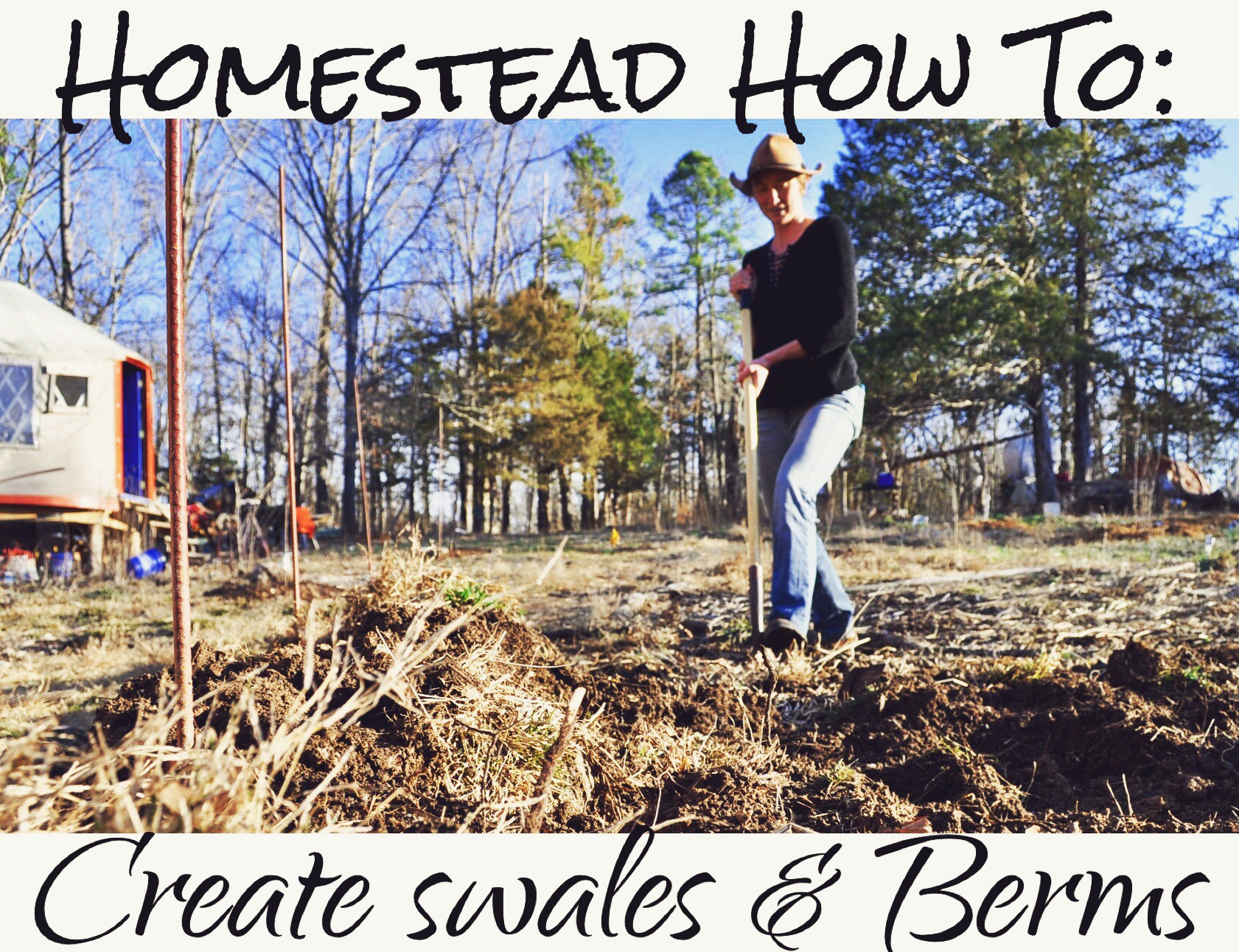</center> <center><h1>Homestead How To: Create Swales & Berms</h1></center> ### When on the homestead, one of the largest things to take into consideration is WATER. * #### Where it comes from. * #### How it flows. * #### How to sequester it on the landscape. ### *In the following tutorial, we'll walk you through the first part of designing a swale and berm system on your land.* > We were having some issues with water puddling in front of a building. Whenever it rains heavily, we can see water streaming down our path to sit right in front of the solar shed. We've been noticing this since last year and, after last week's constant rain and flooding, decided it was the time to get to work. We also have been envisioning planting blueberries and other native perennials and flowers in a swale and berm as functional landscape planting. ## A Berm Is essentially a mound of earth with sloping sides. They're used as landscaping features to add spice to flat land or, as in our case, to help with drainage. ## A Swale Is a low tract of land, especially designed to manage water runoff. <center><h1>Steps</h1></center> **In part 1**, we'll cover the basics of set up, finding contour/slope, laying out stakes, digging and staying on line. **In part 2**, we'll make sure the berm and swale are functional by finding level, adding more organic material and bed prep. **In part 3**, which is further down the line, we'll plant out the swale and berm to stabilize it and make our water catchment functional. ### Whenever rain falls on the homestead, we want to catch it. This slows water down and makes our landscape more self-supporting. The goal is to not have to water that much and to hold as much water that falls from the sky on the land as possible. Deep mulch, ponds, and swales are some ways to do this. <center>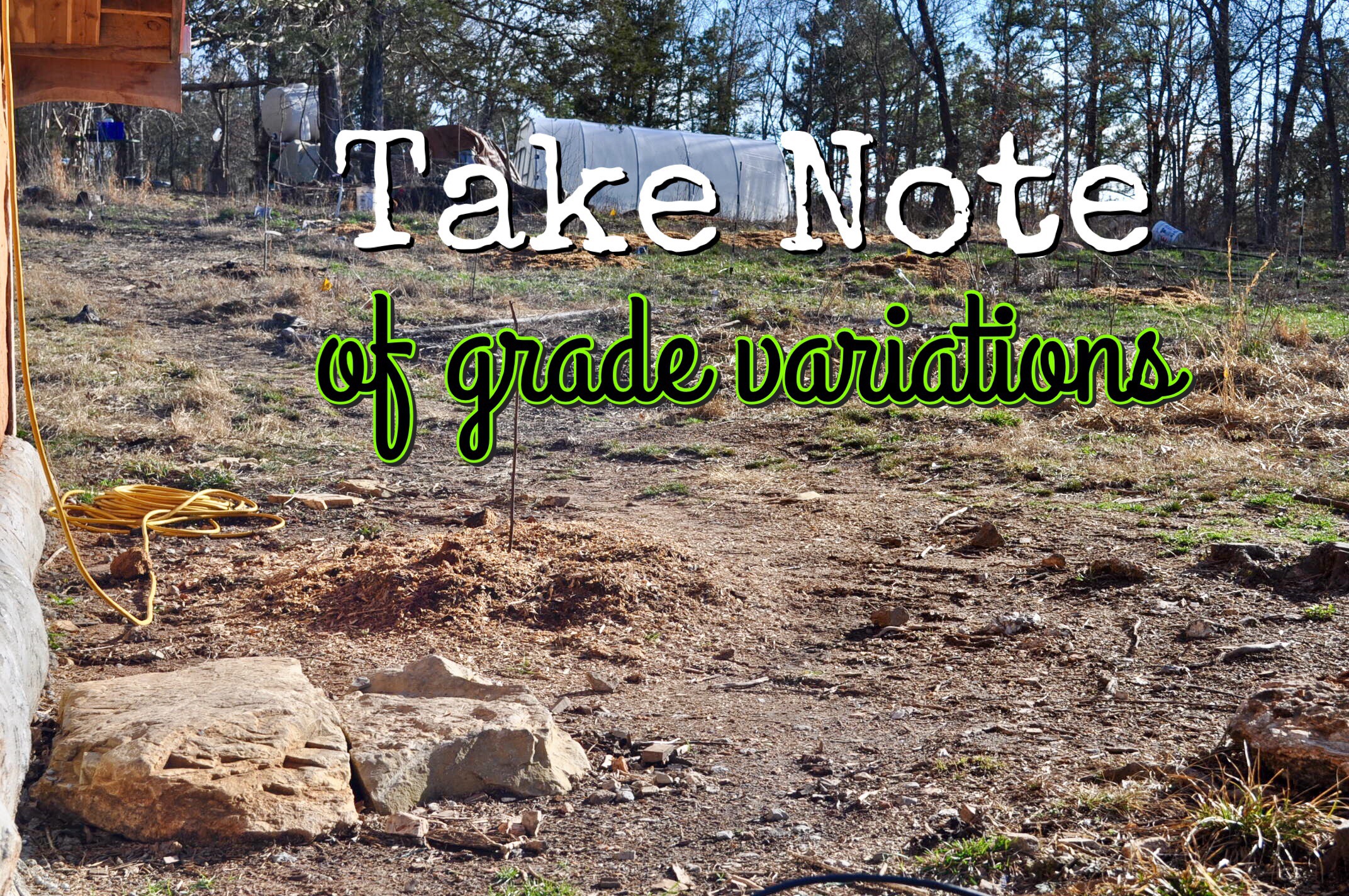</center> <center><h1>Take Note of Grade Variation</h1></center> One of the first steps (which we've been making note of over a long period of time) is finding the slope of the area you're working with. Sometimes the eye is deceiving, but especially if you've been watching the area for a while, you have an idea of where the **low spots** are and how the landscape grade variates. In our case, this photo is taken from the point of view of the low spot. We're taking note of the route the water takes as it travels to the low spot. We're making a berm and swale with a specific intention- to channel water away from the building and into a swale. <center>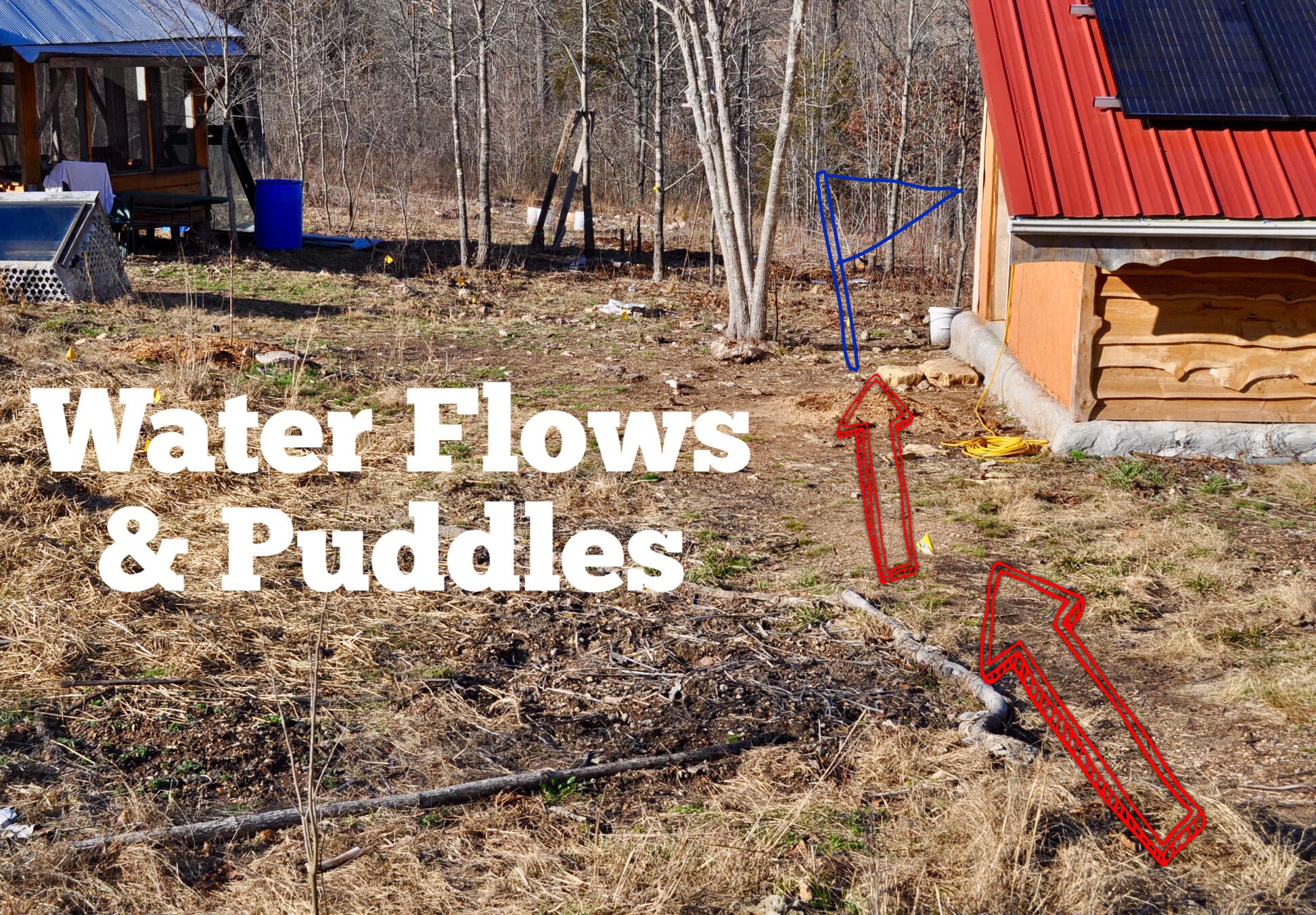</center> <center><h1>Water Flows & Puddles</h1></center> The Red arrows dictate where the water flows and the Blue Flag is where it puddles. Our goal in making this berm and swale is to detour the water from following this path. With some digging and careful observation, we should be able to make better use of this water that already wants to puddle on our land. We want it to stick around -- just not in front of the building. Observation is key here. We didn't notice this over night, but over a period of a year when watching when it rained heavily where the water flowed and where it sat. <center></center> <center><h1>Find Slope/Contour</h1></center> Pay attention to where the natural curve of the land slopes. In this case, we paid attention to * The presence of the Solar Shed, a building * An already existing bed with some perennials in it (they aren't moving!) * An Almond Tree that obviously wasn't going to move either. The goal is to follow the contour or natural slope of the land, while also taking into account existing aspects of the landscape. We decided to follow the path down and then follow a natural curve over to the Almond tree, encasing the backside of it in part of the berm so it could benefit from the watch sequestering as well. <center></center> <center><h1>Define Space by Staking Outer Boundaries</h1></center> After you've gotten a feel for the slope and boundaries, now it's time to stake. We like to use stakes because we work together and it's easy to put your head down and not realize where you're digging. We decided the stakes would mark roughly the midway point of the berm. Lines help the human while you're hard at work and give a sense of consistency to your line. <center>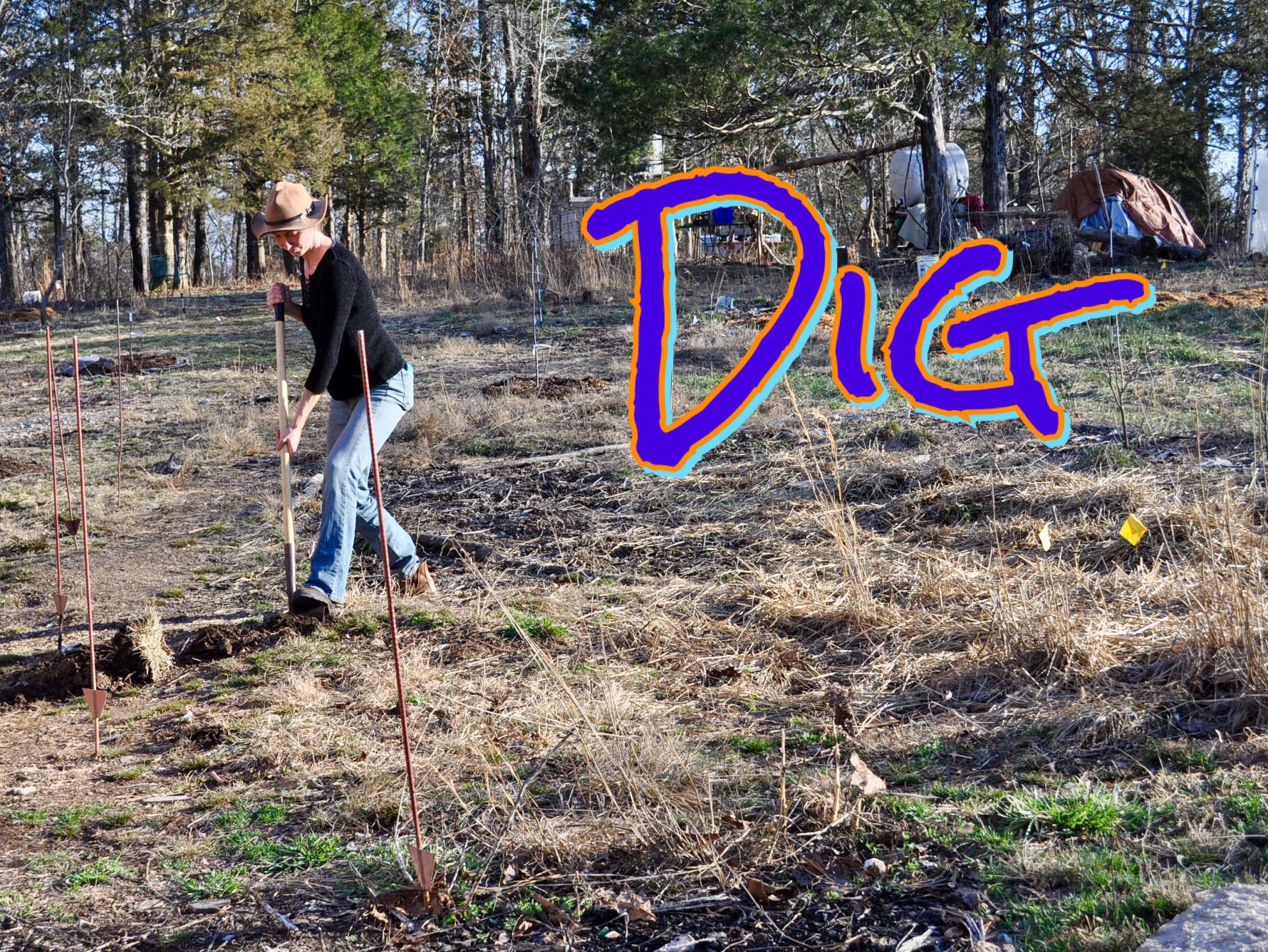</center> <center><h1>Dig!</h1></center> Start digging! The soil was moist so this little bit of action felt good. Before we knew it, we had dug up some high spots in what will become the swale and transferred them to the berm. We're basically making a low point, the swale, and piling it onto the boundary, the berm, which will stop the flow of water. As we all know, water seeks the lowest point and, unless there is excessive force, cannot overcome boundaries very well. <center></center> <center><h1>Make Sure You're Following Your Line</h1></center> Step back and take note of where you're digging and how the line looks to the eye. This is of course a fun and also practical project, so it's important to take note of your future vision of what the space looks like, what plants will fill in the berm and swale and how it fits into the landscape. While you're in the beginning stages of digging and moving soil is the time to amend or shift the shape so make sure you're happy with the curve. <center>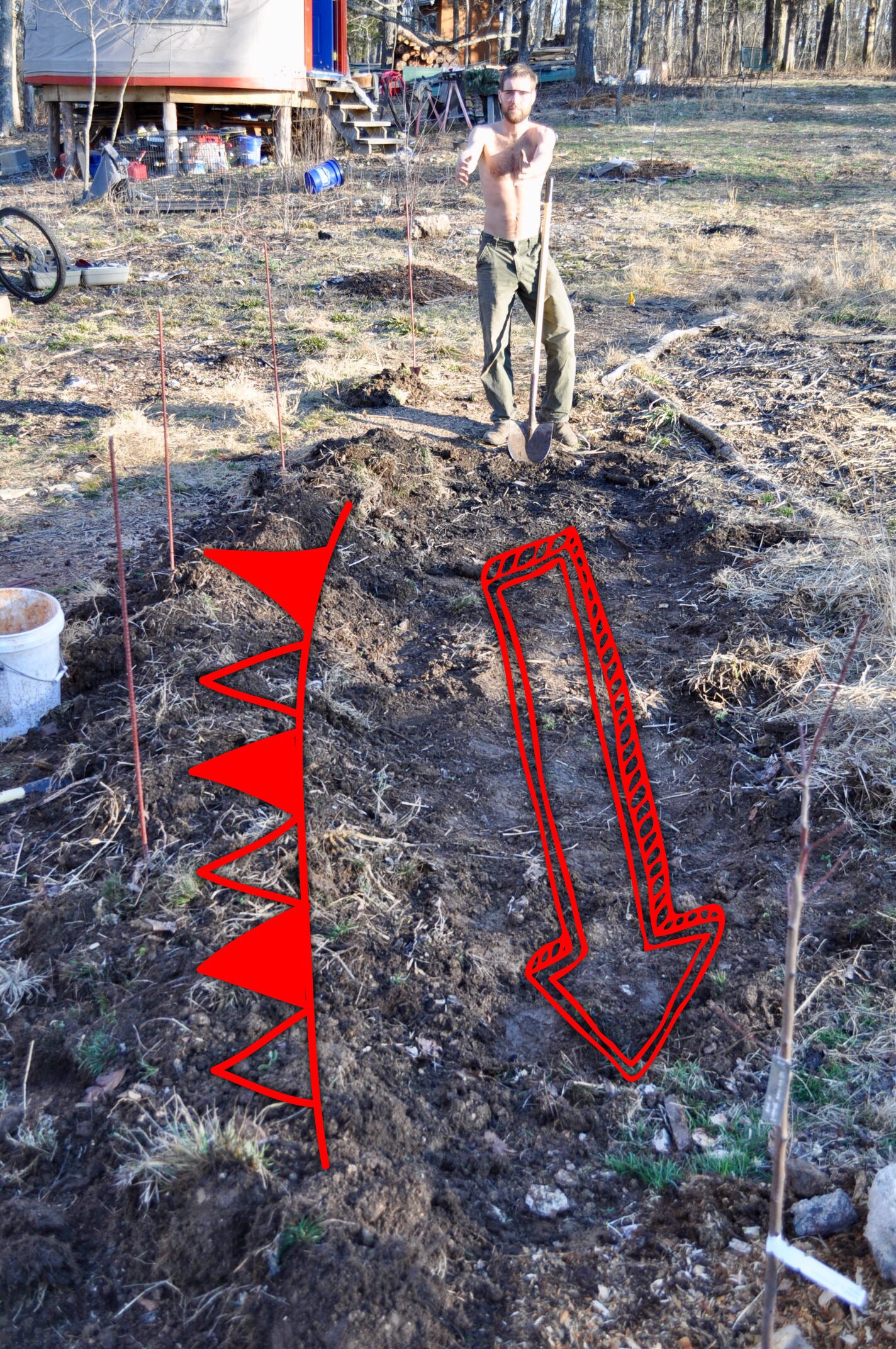</center> <center><h1>Stand Back & Check The Flow</h1></center> Earlier we had agreed upon the natural flow of the berm's contour. We stepped back and shaped the berm a bit (this will happen a lot more in Part 2) and assessed the flow so far. We were really happy with the look of it so far. We also made sure all of the swale was lower than the berm. We'll get more into this in part 2, this is generally just the initial dig and shaping of the new landscape feature. <center>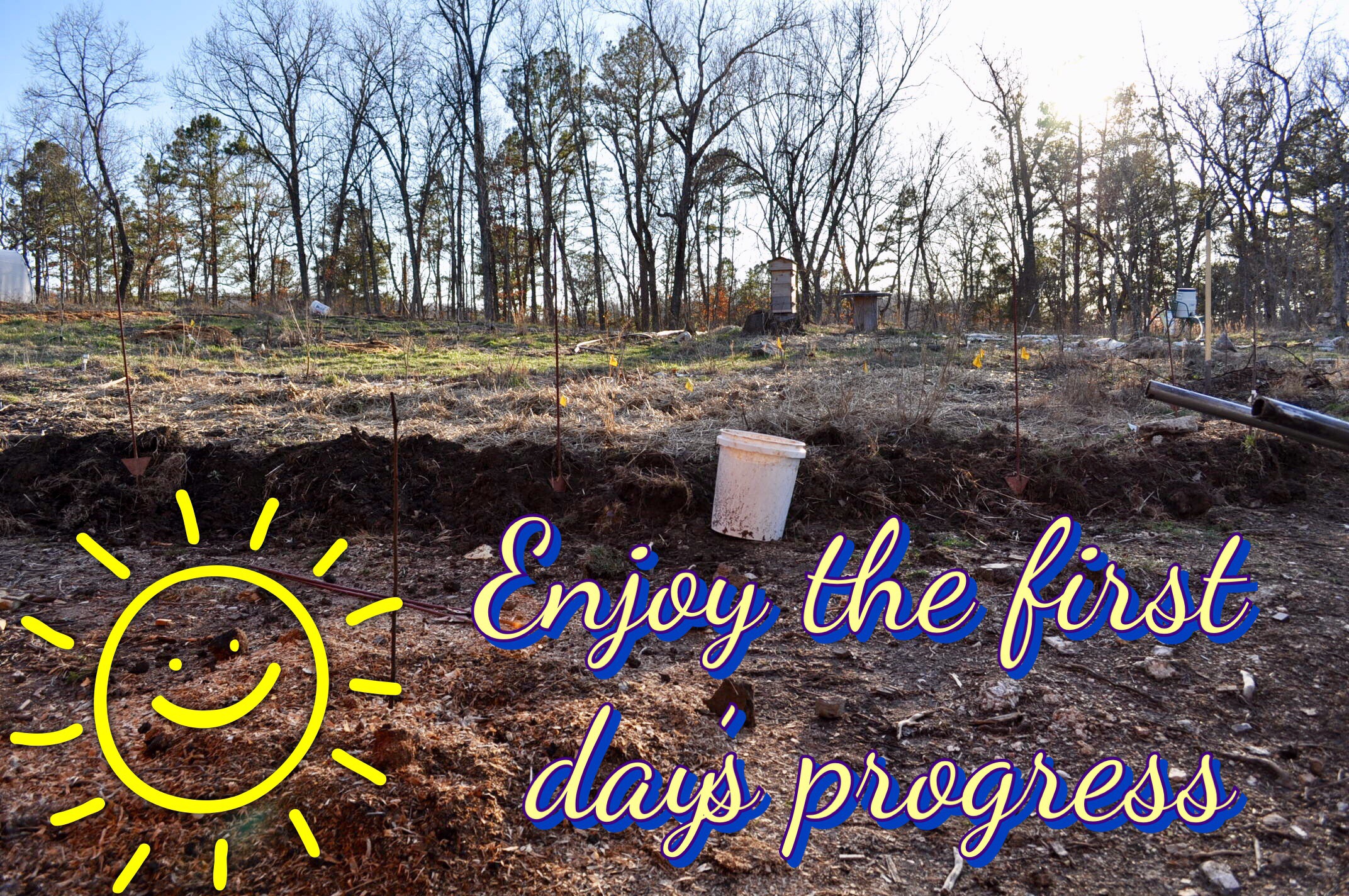</center> <center><h1>Enjoy the First Day's Progress</h1></center> Take note of what you did that day. Usually, we like to start a project and observe our initial work over the next few days. How does the shape of the new feature feel, how does it sit on the landscape, did we miss any high points or any ways the water could continue to escape and puddle in errant areas. Congratulate yourself on a job well done on the first day! Making functional landscape features is a rewarding and fun part of the homestead. ## *Join us for Part 2 as we further sculpt the berm and swale, find level, add organic matter and talk more about our plans for the space.* <center></center> ## Thanks for joining us! Have you developed a berm or swale or other landscape feature on your land? Do you have plans to? *Tell us about it!*
👍 loveiskey, doitvoluntarily, wolfcat, birdsinparadise, yagoub, hansjurgen, sbi2, wolfeblog, revisesociology, benleemusic, my-permaculture, torico, kiaraantonoviche, sagescrub, senorcoconut, facelessmyth, raistlin908, walkerland, jerryt, karenfoster, apasabon, themanwithnoname, farmstead, sherylneil, andysantics48, enolderman, earthmother, goldenoakfarm, cahlen, steemitboard, stephie.spicer, gogreenbuddy, theferalone, bigtfoor, trucklife-family, qberry,